Game is an immersive inviroment for you to escape the reality(greif/trouble/.....) and enjoy the real yourself and your deepest mind without any decoration. You play with the rules, you challenge yourself and you feel good.
You walk on the street, prepare one sentense to give to someone you meet on the road and you ask that person for a sentense to give to others as well. Then you pass this sentense to the second person you choose, then ask a new one...until the 10th person. Post those 11 sentenses on your social media. Hint: Don’t be shy!
Journal thoughts:
About : Games,Design and Play
Some quotes
“Games, Design and Play differs in that it connects the conceptual and design considerations of games with the process of actually designing a videogame from start to finish, from idea to prototype to playtest and finally, a fully realized design. To put it another way, Games, Design and Play is a practitioner’s guide to designing games. It looks closely at games, identifies how games work, and shows you how to design one from idea to fully realized game.”
“Game design is the practice of conceiving of and creating the way a game works, including the core actions, themes, and most importantly, the game’s play experience. Game design requires an understanding of different kinds of games, how they work, and the processes game designers use to create them.”
“Games have style—visual, aural, written, experiential—and they create emotional responses and experiences for players to reflect upon. We want to understand games as things that generate experiences and different dynamics—in a word, play.”
I'm not a very-game person to be honest, since I was a child. I do play and feel obssessed with some specific types of games but not familiar with some like KOF, WOW, League of Legends..... But there are still something relevant to games gives me feeling and inspiration. For example, the movie Ready Player One built an immersive world. I watched a few times and kept diging the shots/characters.......The emotional responses and experiences made me feel like I’m really playing the games in the movie, altough I may not play the similar games in real life. This is the dynamics where chapter one mentioned. “The more focused the designer wants the experience to be, the smaller the space.The more the designer wants the players to develop their own experience, the more open the space of possibility will be.Game state refers to a particular moment. ” As written in the preface, this book is more focus on game design and the core elements: actions, goals, rules, objects, playspace, and players. Now I have some basic understanding of game logic and design process.
Some other quotes from:
A theory of Play and fantasy-Gregory Bateson + The Aesthetics of Play - Foreword and Chapter 1.1 Defining Play



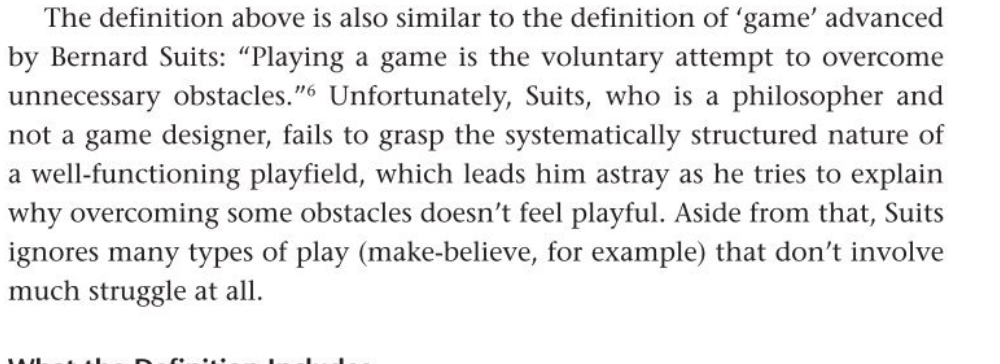


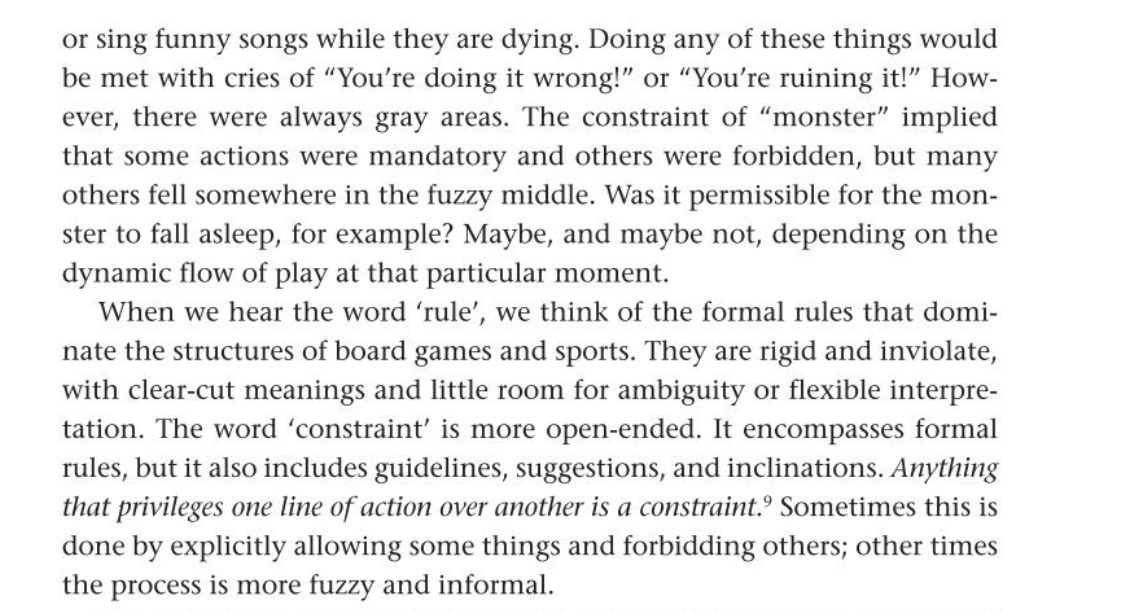






Play experiences is very important as well.
What is play?
Play is a consciousness.
Play is a movement either physical or mental by constrains. I remember when I was playing a game called Two Dots, I’m very ambious on pass the levels and I am extremely concentreted on playing itself. I enjoy the feeling of get rid of the constrains. My emotion was conbined with joy and tnesion at the same time.
“A game is a system in which players engage in artificial conflict, defined by rules, that rules in a quantifiable outcome.”“All that play requires is the construction of a system of rules and the freedom to move within them.”
Under the construction of the system, I lived into the world where the game build. This is somewhere you are yourself but not yourself. You enjoy/express/abreact/extend the sense.......
Monkeys can play but not combat as well. Play can be about noema but that’s not realy necessary. Do you renember when you are a child, you are not smart enough (similar to the monkeys’ play), but you are really happy and enjoy those simple happiness?
Exercises 1
1. Identify the basic elements in a game of your choice (actions, goals, rules, objects, playspace, players).
Game: Two Dots
Actions: connect the dots
Goal: reach the aim score to pass the level
Rules: connect the adjacent dots with the same color in limited movements,but can’t do the diagonal one
Objects: the dots and some other props
Playspace: phone
Players: only one
2. As a thought experiment, swap one element between two games: a single rule, one action, the goal, or the playspace. For example, what if you applied the playspace of chess to basketball? Imagine how the play experience would change based on this swap.
- rock, paper,scissors
- blackjack
Switch the players, so for rock,paper,scissors, there will be one banker, the others in the group all play with the banker, the banker lose the others win. For blackjack, the players just play one by one, no banker anymore.
3. Pick a simple game you played as a child. Try to map out its space of possibility, taking into account the goals, actions, objects, rules, and playspace as the parameters inside of which you played the game. The map might be a visual flowchart or a drawing trying to show the space of possibility on a single screen or a moment in the game.
- hide-and-seek

Exercises 2
1. Think about your favorite game and what would make it easy to achieve the game’s goals, and then think about how the game designer used constraint to make the goal fun to pursue.Two Dots
Easy mode: spend money to buy props 😂️ or if you keep wining, then at the very beggining of each game you can get extra props to clear the dots. For different veriables of dots , they can have different functions.
2. Choose a game with direct action—perhaps a sport where the ball is directly handled by players—and make that interaction indirect. Now try making indirect action direct. What does it change about the nature of the game?
Drum-and-pass game:put the flower in the same position, people run as a circle to touch the flower. It changed the movement, there may be not only one people touching the flower at the same time, so maybe more difficult to win.
3. Take a purely strategic game like chess and add an element of chance to it. How does this change the play experience?
Five-in-a-row rule: the player should drink one cup of bear before each movement.
Then the players will be dizzy to make the wrong decision, that could be quite interesting.
4. Find examples of games using abstraction to model the real world. How close is the game system to the real-world system? Where does it depart from the real-world system?
Mcdonald’s videogame.
The game is a simplification of the real world, but it basically keeps the actions and objects that you need to run a McDonald's. Customers, cashiers, kitchens, farms, processing plants, marketing teams. But at the same time, running a McDonald's in the real world is much more complex and diverse than the game, also because the game is a bit old from now, there is no social networking part involved.
5. Pick a game you like, and consider how it uses theme and storytelling. How do the theme and story relate to how players engage with the game?
Chinese whispers
Chinese whispers is a very thought-provoking game. Suppose there are twenty people attented, the first person whispers a sentence to the next person, until the twentieth person. What’s the outcome? This topic reminds me of the cultural dissemination of memes and the differences and failures of information dissemination.
6. Pick a game you play at home. Reimagine the play experience if it were played in a public park.
Drinking game: three words
Three words is a Chinese game usually played while a group of people are drinking. The rule of the game is that you can only say three words, any three words. if the first person says three words to the person on his right and that person wants to repeat those three words, he must also say them to the person on his right, and if he wants to say three different words to battle back, he has to say them in the opposite direction, and those repeated three words cannot be repeated to the first person who said it. It's easy to make mistakes when two people are fighting. What if the game was played on the underground?
MAKE A PATH
2-4 Player game
Go from A to B. First to get to B wins A theme - A movement mechanic (rolling a dice is too easy) - A conflict between players
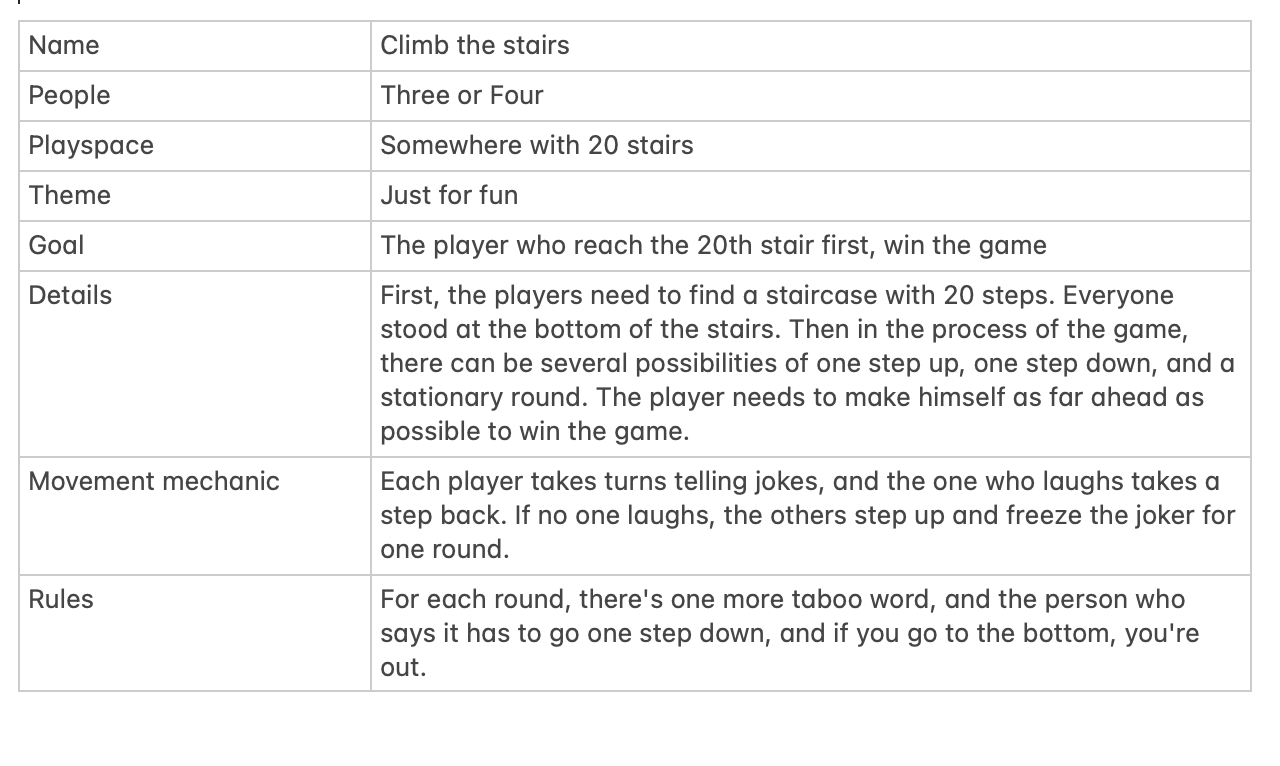
Reading
Game, Design, Play - Chapter 2

A game experience is a combination of game goals, action, sensory style, story, and more...I can say I’m an impatient person so I really understand the feeling of the balance between challenge and ability in player experience.
There's a game in China called werewolf kill. "A game typically involves 6 to 12 players and a host (commonly known as God or judge). The game alternates between "night" and "day" phases. The facilitator is responsible for distributing character identities, dealing with the player's character skills, and alternating stages.
Each player will be given a character before the game starts. The characters are divided into two opposing camps: the "innocent" camp and the "werewolves" camp. There are several commoners and clergymen in the good camp, who do not know each other's identities, and need to use the clergymen's abilities and the player's language and expression to distinguish the good and bad people in the village, and vote out the werewolves by casting them out and using character skills to win. The werewolf camp is small in number, mixing in the good camp to confuse the public; They can meet each other every night and kill a player together. The Werewolf faction needs to eliminate all civilians or clergy in order to win.
At the end of each night, all surviving players take turns to speak and vote out one player after all have spoken. If the werewolves make it to the end, they win.
In werewolf killing game, I think my abilities are very limited, and if I don't make the right guess in the limited time, then my whole person may start to wander. My attention would wander and I would lose interest in delving into what other people were saying. There may be players who enjoy the uncertainty of direct or indirect interaction. They were interested in developing their skills by failing over and over again, but every time to my turn, my language became very deficient, with only "I am a good man, I am not a werewolf". I think balance is important. The player's own language skills and play bring a very broad interactive experience to the game.
Howling Dogs' minimalist style works in much the same way as werewolf killing: Taking the simplest base elements to lead the entire experience gives the player more space to play.
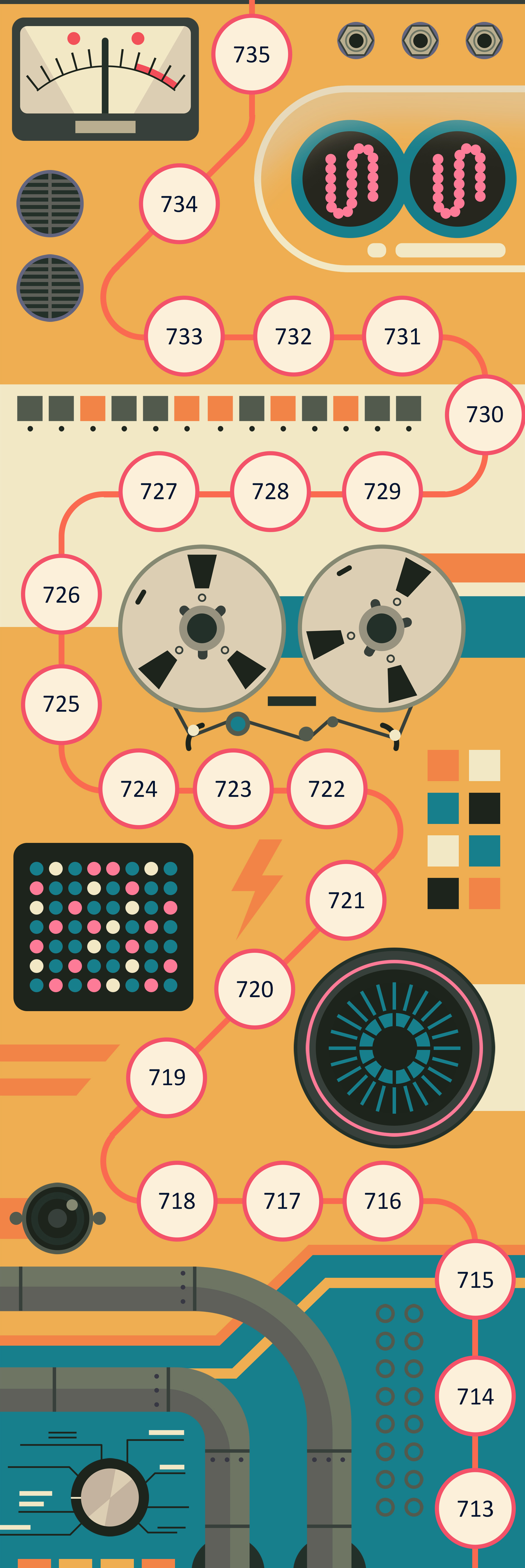
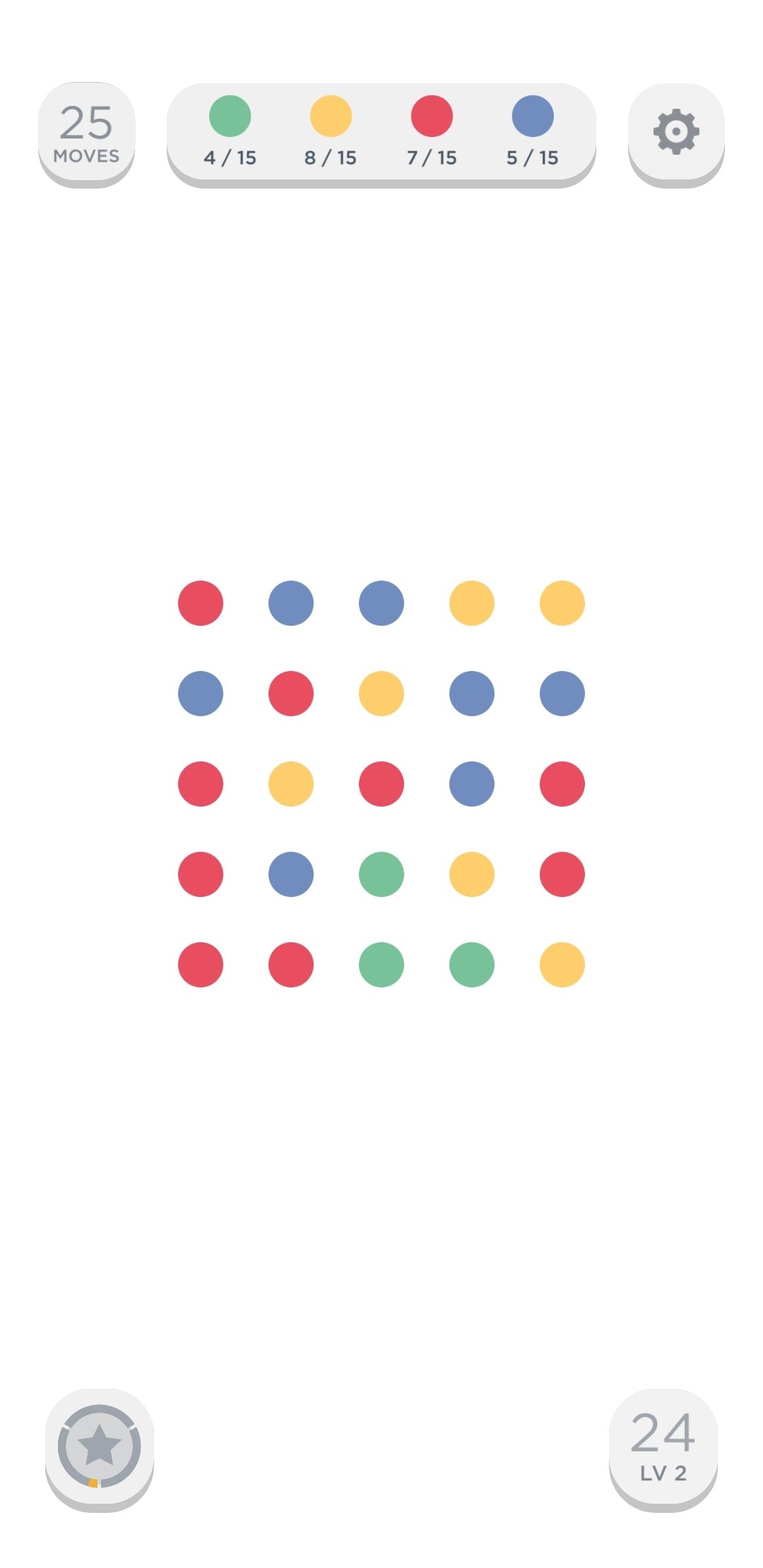
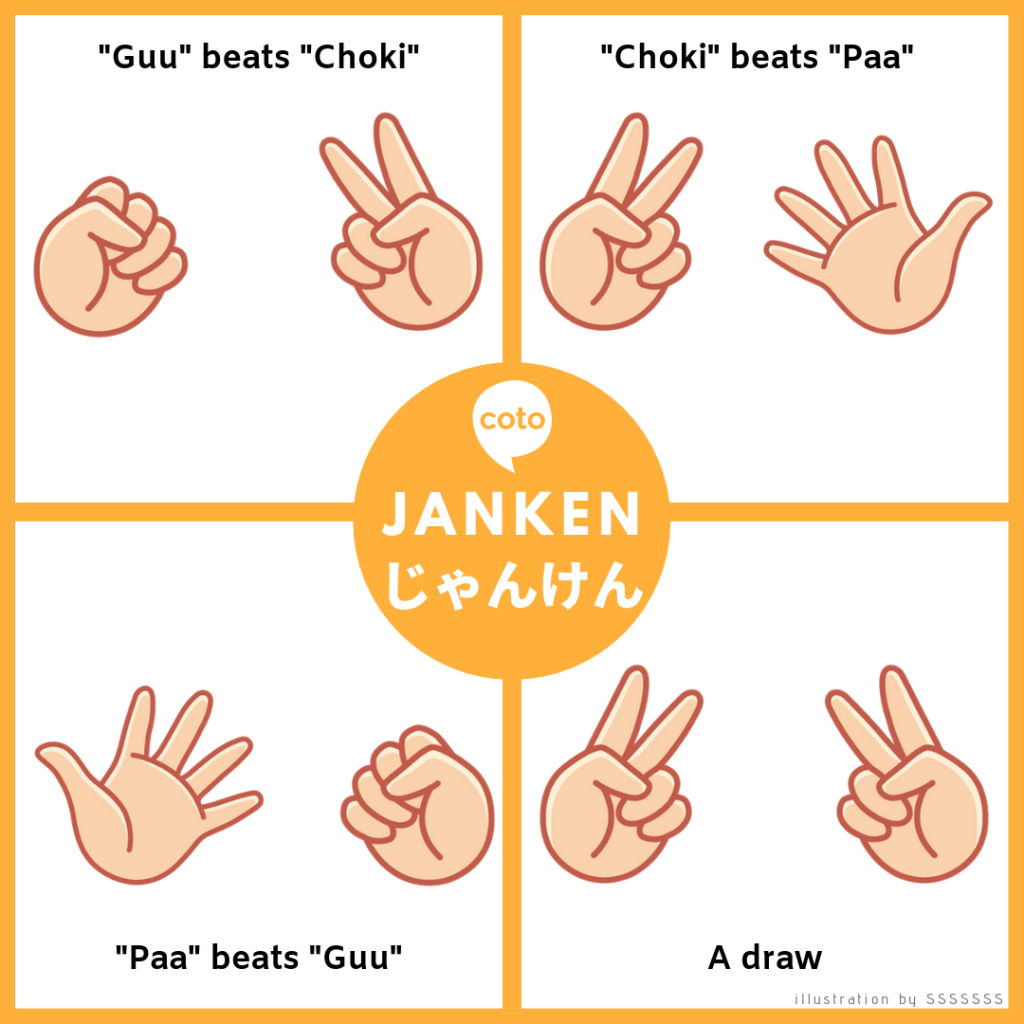
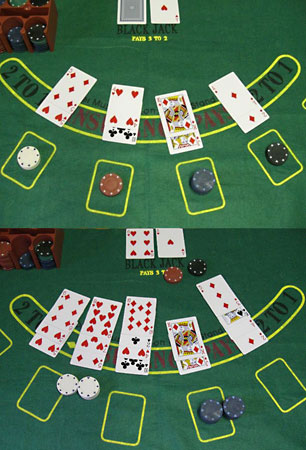

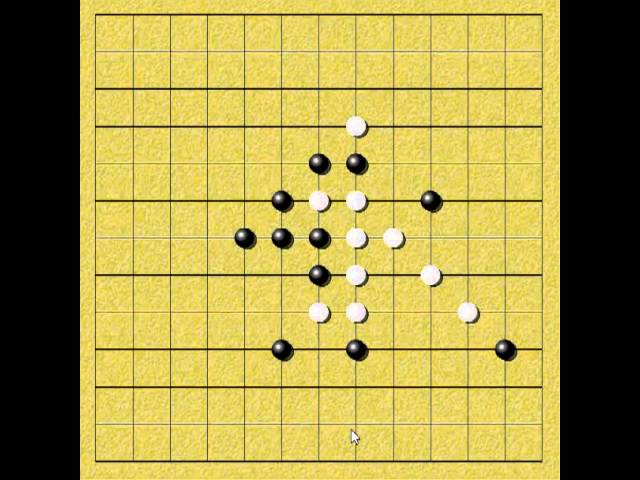
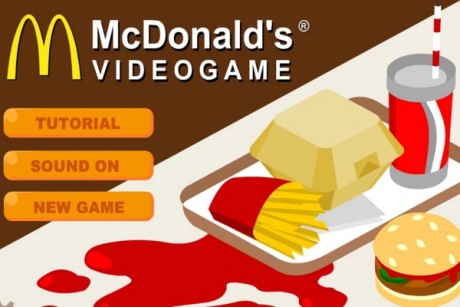

“Instead, the basic tools of game design are more like the foundational principles of visual art—symmetry, contrast and hierarchy, for example. This sort of tool helps designers understand the parameters of game design in the same way that color, line, form, and composition establish the basic parameters of visual art.“
“There are ten basic tools for designing games: constraint; direct and indirect interaction; goals; challenge; the interplay of skill, strategy, chance, and uncertainty; decision-making and feedback; abstraction; theme; storytelling; and context of play.“
“All games provide some level of challenge, even if the players provide it themselves.”
“flow channel” between anxiety and boredom, rising with skill and challenge.
“These decisions aren’t building toward a measurable or competitive outcome, but instead informing the course the story will take. And so while choices about how the player moves through Porpentine’s game don’t generate a score, they do have poetic as well as story-changing impact on the play experience.“
Other reading
Emotional Design (Don Norman) - Chapter 1,2,3
MDA Framework (paper)

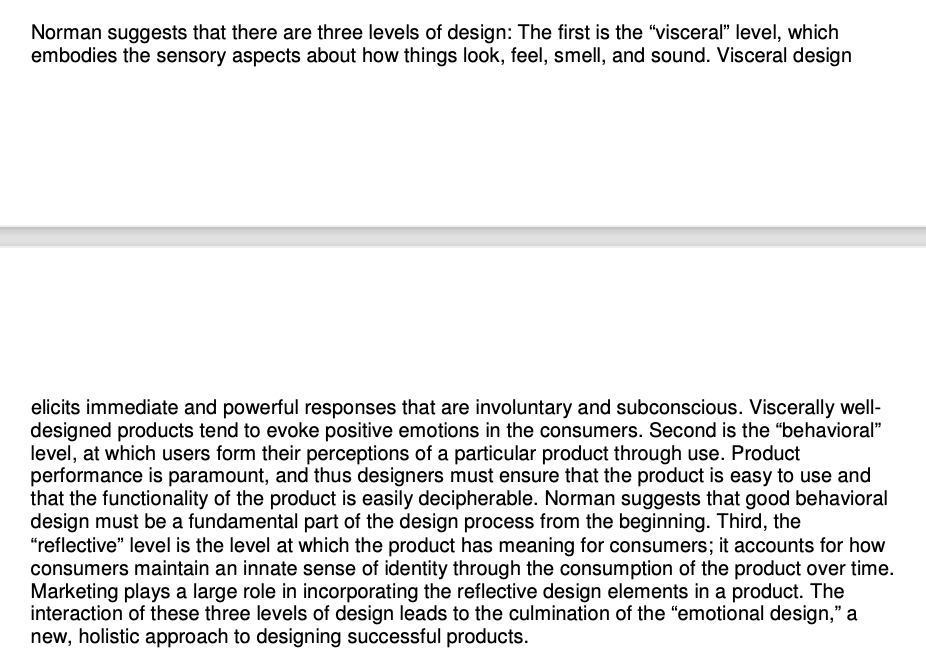



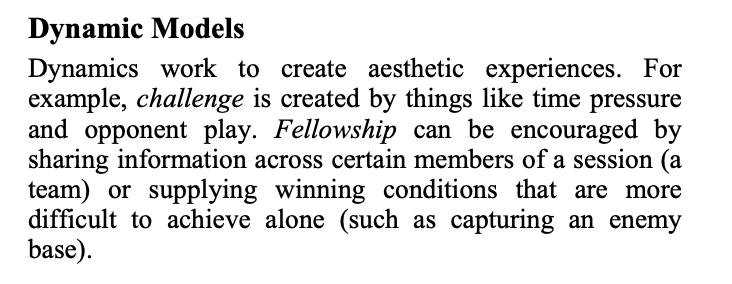
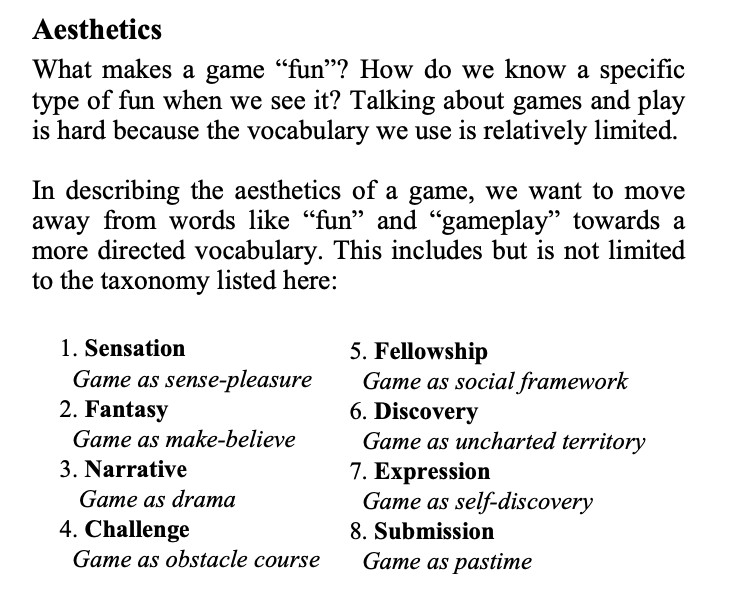
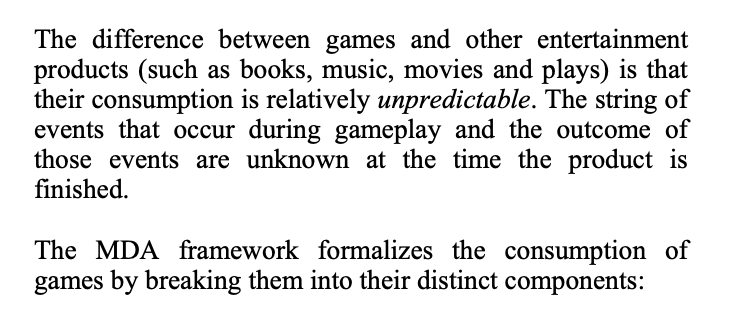
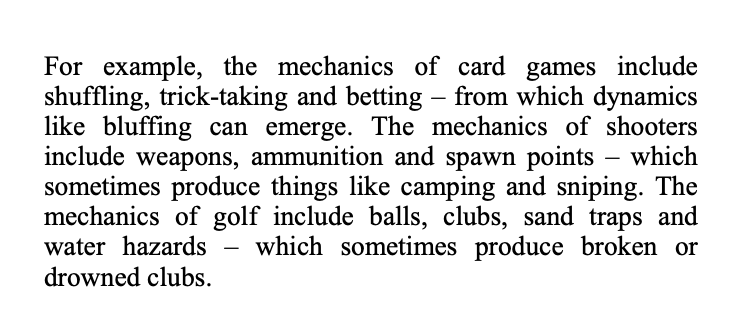

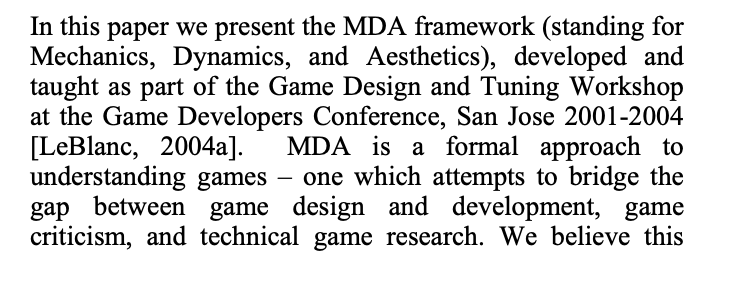


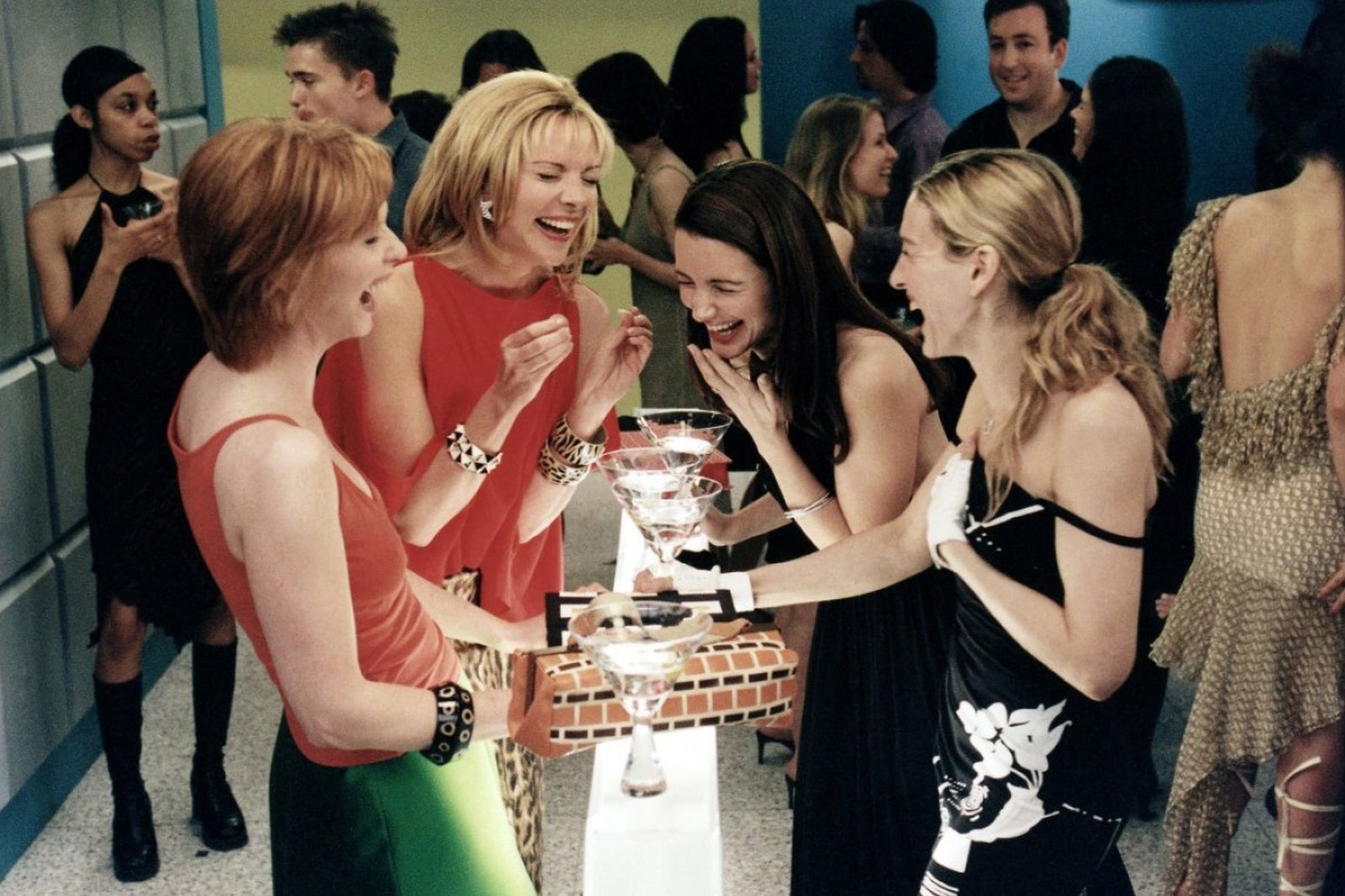
Sex and the City is one of my favorite TV shows. I think it goes with the game theory in Mechanics/Dynamics/Aesthetics and has a lot of relevance. Let's imagine the main characters are actually playing a New York City love game with some unspoken rules about how men and women interact and some sophisticated code words. They grow their experience through the game(life), gradually building up what they think is a complete game mechanic that is both fun and bittersweet. The game is also full of dynamic balance, because no one is an NPC, there is no pre-laid outcome or feedback, all gameplay is unpredictable, and every decision of each player has the potential to affect the outcome later.
Sensation/fellowship/fantasy/discovery/narrative/expression/challenge are all involved in this game but no submission. May be there is some submissions about some past relationship? But life is still on. Past is past. Game won’t be over.
Exercises
1. Choose one of your favorite games and describe it using one or more of the kinds of play described in this chapter: competitive and cooperative play, skill-based play, experience-based play, chance-based play, whimsical play, role-playing, performative play, expressive play, or simulation-based play.
Fight the Landlord also called Doudizhu:competitive and cooperative play skill-based play chance-based play
Doudizhu is a card game invented by Chinese people. The game consists of 54 cards, including two joker cards, namely the big colored joker (also known as big King) and the small black and white joker (also known as small King). There are usually three players in the game, one is the landlord and the other two are farmers. Both sides play cards against each other. The landlord plays first, and when one player from either side finishes playing, the other side wins.
2. Take the game you described in Exercise 1 and try to apply another kind of play to it. What happens when a skill-based game becomes more whimsical? Or simulation based?
To eliminate the landlord concept, each play requires the player to roll the dice, and the player with a large number of cards plays the card, but the other players without cards can give any card they don't want to that player
3. Turn a competitive game into a cooperative one. How will the rules of the game change? The goal?
The goal of cooperation is to fill the board without winning or losing.
4. Choose a game of skill and turn it into a game of experience, or vice versa. How does the game need to be modified to turn it from one type to another?
Two Dots
The player’s goal is to know the whole storyline by pass each round.
In this case, the game needs to lower the difficulty of the level and add a double link at the end of each level, so as to get a new story, and the player can understand the story by going through the level.
5. Redesign a game based primarily on chance and uncertainty (Candy Land, roulette) to rely less on chance and include more player choice and strategy. Try to play it with some friends. How is the play experience different?
Blackjack
Can let the player know the banker's cards in advance, so that the player can play more conservative (bigger than the banker on the line), can also be more aggressive (must be bigger than the dealer anyway, must continue to ask for cards, if not he will lose)


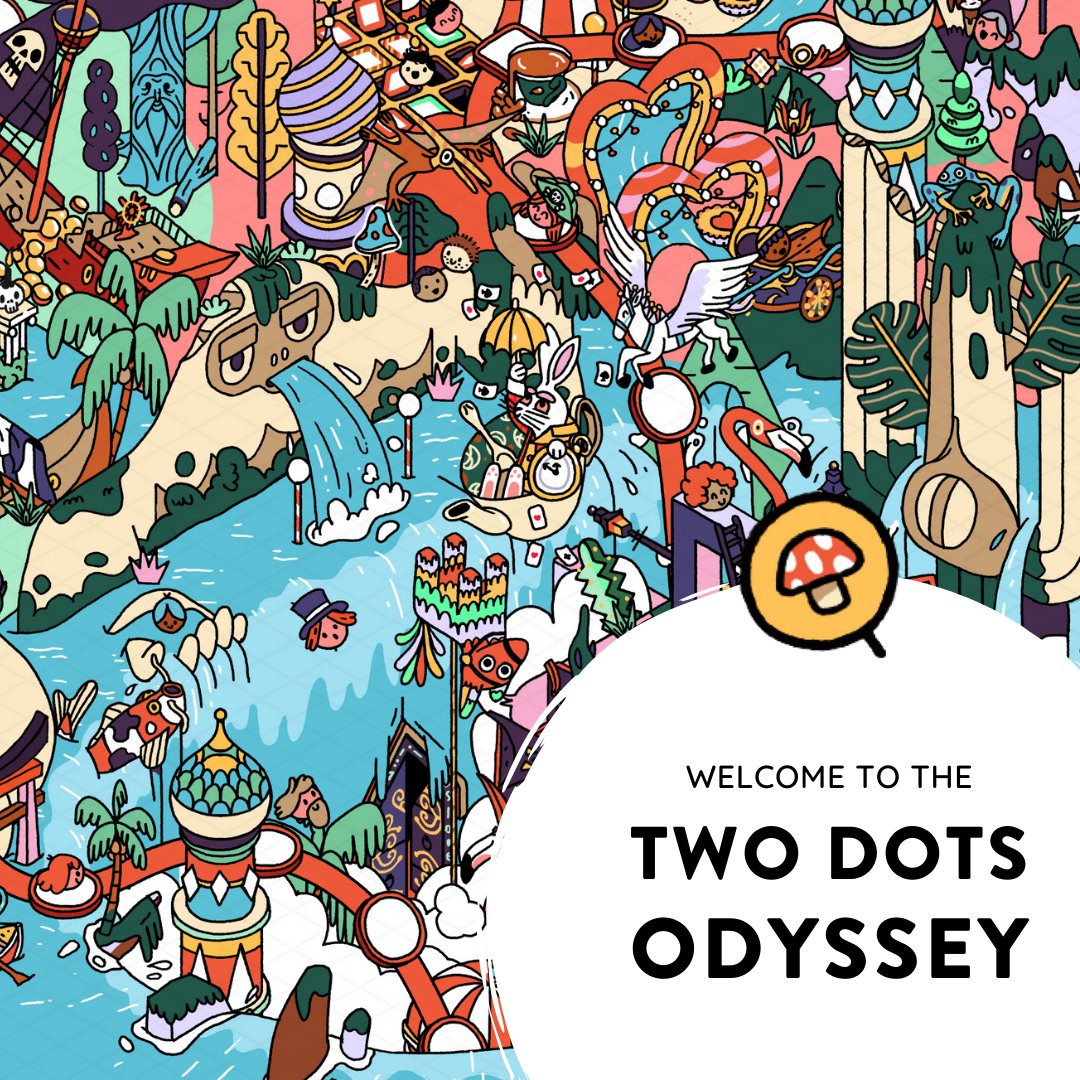
Reading thoughts
Game, Design, Play - Chapter 3
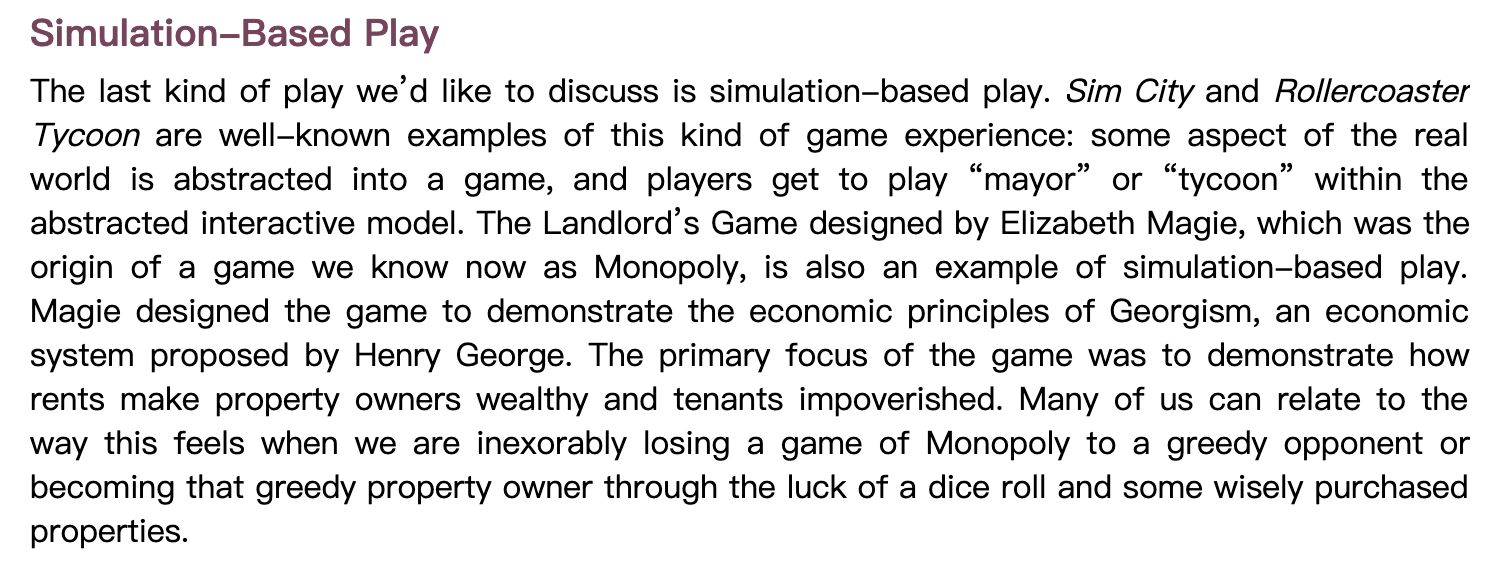

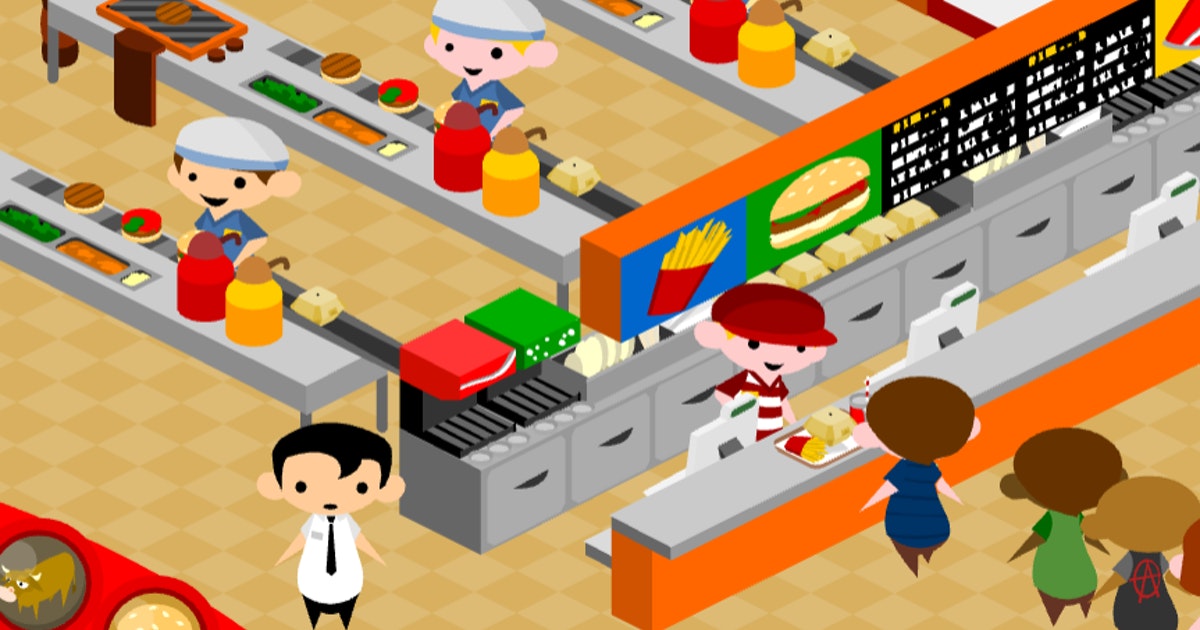
The simulation-based McDonald's video game is an abstract-simplified real-world system game. This is a huge ironic model:
Simulate the impact of McDonald's on human, animal and environmental society. The farming regions are a mockery of the history when Europeans went to America to rob land from Indians. Genetic soy is also an ironic take on McDonald's food health problem. "Adding industrial waste can save time and money, although the waste is not good for the health of cattle, but it is cheap enough to win" the game can not use sick cows, is like the last bit of conscience...
I remember being a big fan of this game when I was a kid, even though I always went out of business because of poor management. The game is usually over on me by the tenth year of operation, but this does not frustrate me. My heart always wants to challenge for higher score and study the core of this game. In Game State, there are pisitive feedback and Nagetive feedback. Pisitive Feedback is like running the business well, continued gaming, customer satisfaction, and an adequate supply of grass and cattle. Nagetive feedback is, you're losing money, there are long lines of customers but not enough beef, you can't hire good staff, the land is too poor to grow soybeans... Most immediately, the game is over. However, even Nagetive feedback did not make me feel nagetive. On the contrary, I became more and more brave and wanted more and more challenges. I like games that have a story but are not very complicated.This modules are also very clear: planting area, meat processing plant, restaurant, management area. I thrive and enjoy failure after failure.
A Gameful World - pages 0-23
Celia Pierce - Games as Art


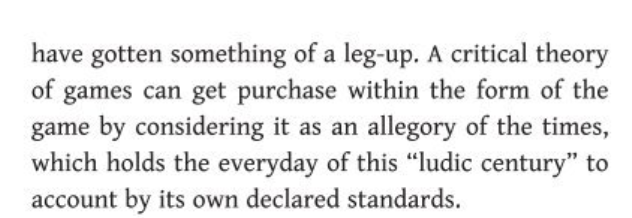










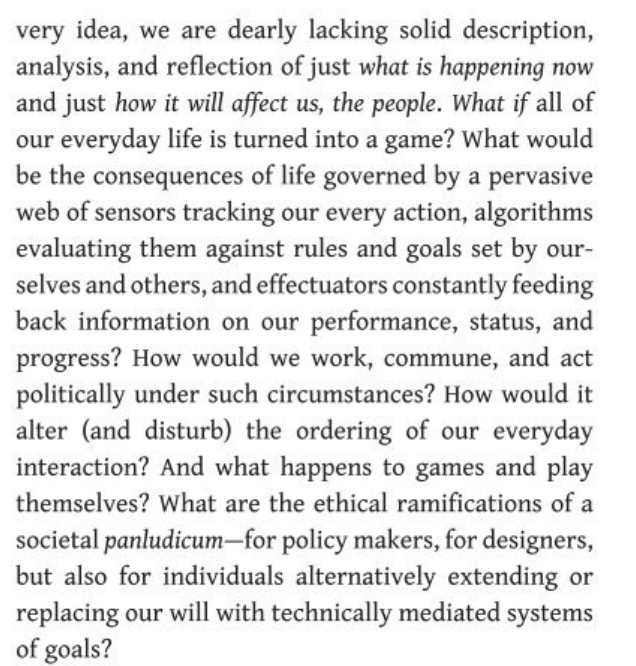
Monument Valley is a game that really moved me. It's a journey of forgiveness.
The story opens with the silent princess IDA and a series of floating ornate castles. We don't know where she came from or where she's going. She and the spirit in the dark have an uninvited appointment, wandering for a long time, perhaps only for a new understanding of their own, to find a home belongs to her. During the journey, when the foot becomes a cliff, when water and waterfalls block the way forward, as long as the perspective is changed, the world in front of her is another scene, here, she found a new way of walking. She needed a new way to retrace her former path. When she entered the crow's nest, this is a kingdom without king, the original king had already lost himself, leaving only the wandering crow in the circle of the triangle around. Finally, at the top of the nest, she found the key. The slope to the ground, no understanding. Salvation is the courage to face the darkness alone, and the determination to bring flowers to a monument and the end of the journey is to return everything to its rightful owner, to find who you really are.
I love this game. Aside from the aesthetics of the game itself, the most important thing is that I think the whole game is like life. Long life, numerous challenges, most of the time to a person to face difficulties and challenges. Occasionally there will be friends to accompany, but eventually will go their separate ways, the kind of sad parting, let me want to cry; When we meet again, we are as happy as the friends we have missed for a long time.
I feel like a little girl in a game, who doesn't know what she's going to do, and who needs trial and error to make progress. There is no time limit and there is no need to compare with anyone. I am especially like me, who is clumsy in both games and life. I am not good at competing with others, and the biggest challenge is to walk a long way alone.
“while every poem or every song is certainly a system,games are dynamic systems in a much more literal sense.”
The simpler the mechanic, the more likely the player is to feel peaceful, simply because a more complex mechanic demands concentration and can be very frustrating if not well mastered. However, if the player finds the task too easy to complete, they will lose interest in the game because it no longer provides them with a challenge and therefore there is no point in continuing. Monument Valley has struck the right balance in dealing with this problem.


